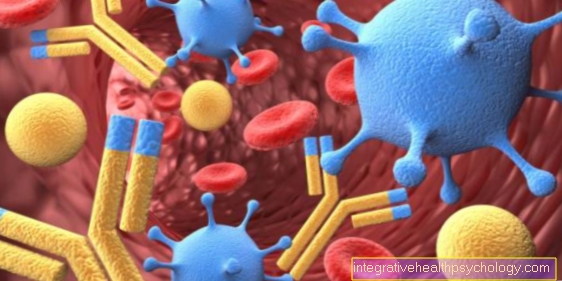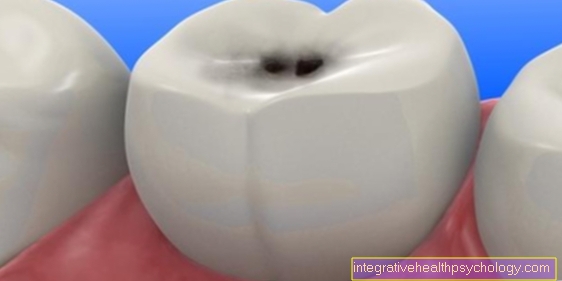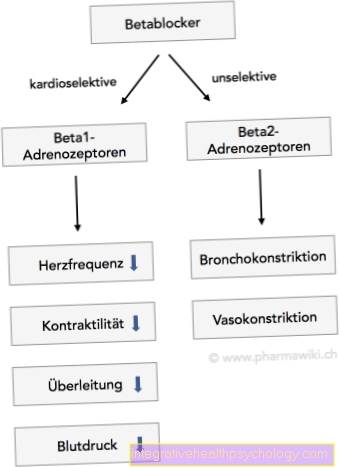Diseases on the tooth
introduction
A healthy set of teeth makes a significant contribution to the quality of life. Healthy teeth as well as healthy gums not only enable chewing of e.g. a tough piece of meat, but have long since become a sign of health and attractiveness.

To maintain this condition, you need thorough oral hygiene and regular checkups by a dentist.
The most common dental diseases include:
- Caries
- Tartar
- Inflammation of the gums (gingivitis)
- Periodontal disease
- Tooth pulpitis
- Abscess on the tooth (an abscess is an encapsulated cavity filled with pus)
Caries
Caries is one of the "sugar-dependent infectious diseases" and one of the most common dental diseases. It occurs when plaque is not removed regularly. The microorganisms that are in the plaque process sugar from food into organic acids that attack tooth enamel. The acids remove minerals from the tooth and thus weaken its surface until they break in. A "hole in the tooth" is created. If the tooth is not removed and the tooth is filled, caries can spread further and further into the tooth and, as a result, lead to further diseases of the tooth.
Read more on the topic:
- Tooth decay treatment
- Symptoms of tooth decay
Tartar
Tartar is mineralized plaque. Plaque consists of microorganisms and their metabolic products and adheres firmly to the tooth. It must be regularly removed from the tooth surface with a toothbrush. If this does not happen, minerals from the surrounding saliva accumulate in the plaque and convert it into tartar, which can no longer be removed with a toothbrush. A visit to the dentist is required, who will remove the tartar using ultrasound.
Read more on the topic: Removal of tartar
Inflammation of the gums
Inflammation of the gums is also known as gingivitis. The plaque that accumulates on the tooth surface consists of microorganisms that release metabolic products. If the plaque is not removed regularly, these metabolic products can reach the surrounding gums and trigger a series of reactions that increase blood flow in this area. The gum line appears red and swollen, and bleeding gums are easier.
However, good oral hygiene can regain control of gingivitis and allow the gums to fully recover from the inflammation.
Read more on the topic: Gingivitis
Periodontal disease
While gingivitis is an initial defense reaction of the gums to the inflammation-causing substances from the plaque, periodontitis is a pathological inflammation of the entire periodontium. It is associated with gingival pocket formation and bone loss.
The gums can pull back and release parts of the tooth root. In the advanced stages of the disease, so much bone may have broken down that the teeth may loosen. In any case, the dentist must initiate periodontal therapy in order to professionally clean the gingival pockets and specifically target the germs.
Read more on the topic: Periodontal disease
Pulpitis
The word pulpitis is made up of the word "pulp" and the ending "-itis", which always indicates an inflammatory process. The pulp represents the inner workings of the tooth and consists of from the tooth nerve and vessels that supply the tooth with fresh blood. This means that pulpitis is an inflammation of the tooth nerve including the inner workings.
The tooth nerve can become inflamed if bacteria get inside the tooth from outside. This can happen, for example, through deep caries. The bacteria dissolve the hard tooth substance until they have penetrated the pulp and infect it. There is a defense reaction against the invading bacteria, blood flow increases and the inflamed nerve usually causes pain.
Read more on the topic: Pulpitis on the tooth
Pulp necrosis
Pulp necrosis is a dead tooth nerve or the death of the nerve. Are bacteria caused by e.g. If tooth decay has penetrated the inside of the tooth, pulpitis, an inflammation of the tooth nerve, occurs. At this stage, the sufferer often experiences severe toothache. It is not uncommon for people to report that they have suffered from this severe pain and that the pain has subsided after several days.
This indicates that the tooth nerve has slowly died from the infection. The bacteria destroy the nerve and break down the surrounding tissue in the pulp. The tooth is called "devital", ie dead. The death of the nerve is often accompanied by a darkening of the tooth.
Abscess on the tooth
An abscess is a collection of pus in a new cavity created by an inflammatory, corrosive process. The pus that fills this cavity consists mainly of dead cells, bacteria and the body's own cells of the immune system.
If an abscess develops on a tooth, it usually happens through its root canal. The germs penetrate the tooth via caries and infect the tooth nerve that emerges from the tooth at the end of the root. This is where the inflammation spreads in the bone and in the surrounding tissue. Cells die off and the pus accumulates.
Read more on the topic: Abscess on the tooth
Fistula on the tooth
If an abscess has formed at the tip of a tooth, for example, what is known as a “fistula duct” often develops after a while. A fistula is a duct-shaped connection between two cavities or an organ and the body surface. In this case, a passage is created between the pus-filled cavity around the tooth and out into the oral cavity.
The pus can drain through this passage, which the person concerned notices in a putrid taste. The fistula can usually be seen on the gums at the level of the root of the affected tooth. The fistula, like the abscess itself, can heal again if the abscess is treated.
Read more on the topic: Fistula on the tooth




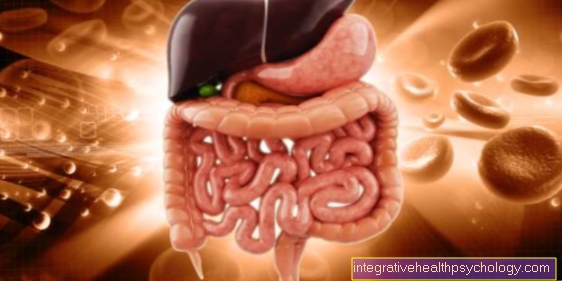





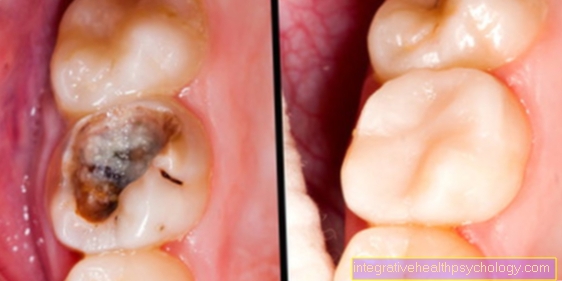



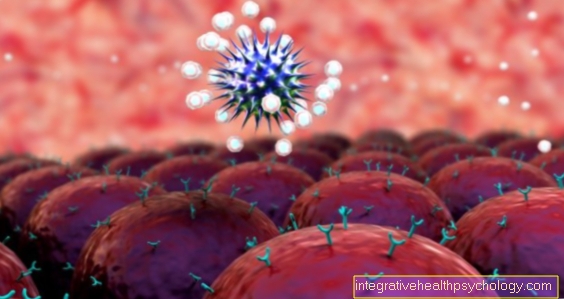
.jpg)






